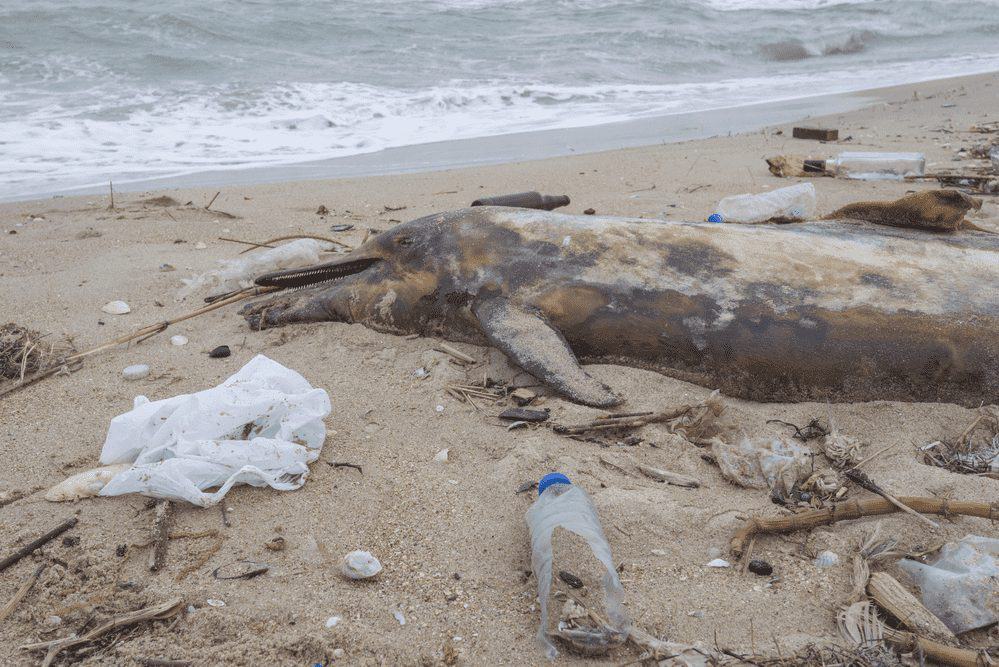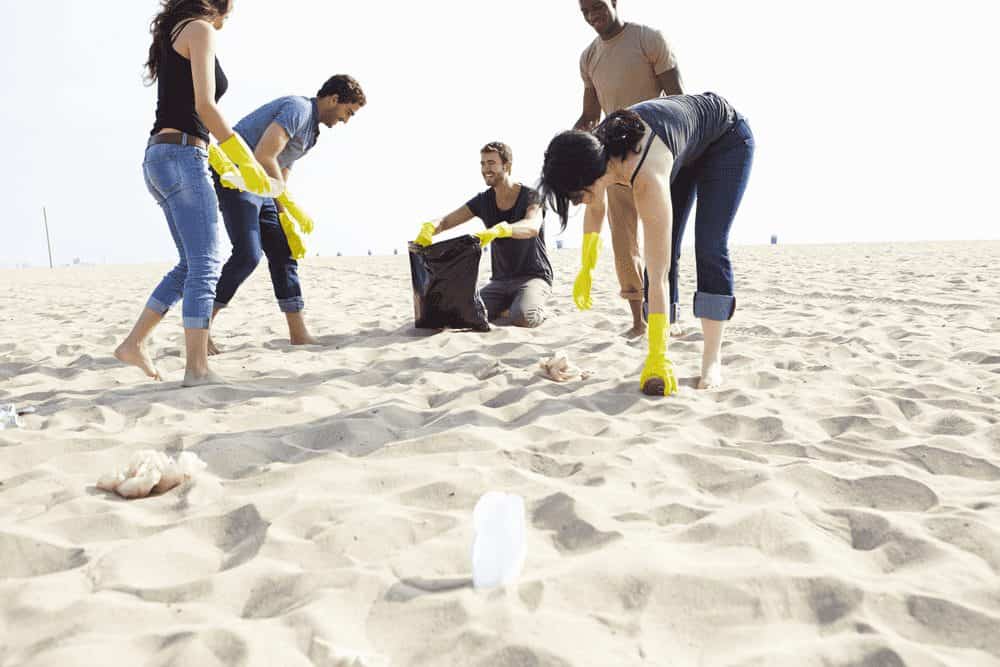Did you know that an estimated 8 million tons of plastic enter the ocean from the shores of coastal nations every year? Did you also know that 79% of all plastic used ends up either in the ocean or landfills, while the other 12% is burnt in incinerators, and only 9% gets recycled?
The statistics above are a stark reminder that we need to rethink how we use and dispose of plastic, particularly in packaging. This will require companies that manufacture plastic products to start genuinely caring about the environment so that they can do their part in fixing the damage that has already been caused by plastic pollution.
While companies that manufacture plastic products can play a crucial role in producing sustainable and environmentally friendly products, the consumer holds the ultimate power—through their pocket—to force those who do not want to change their ways.
If you don’t know how you can start changing things in your own small way and working with those already taking measures to reverse the damage caused by plastic pollution, this article is for you. Together, we can embrace different ways to protect the environment from plastic pollution. The coming generations will thank us.
Why Should We Care?

Maybe you don’t understand what the hype about plastic pollution is all about. Laura Parker writes for National Geographic. She reports that “Millions of animals are killed by plastics every year, from birds to fish to other marine organisms.” Adding, “Nearly 700 species, including endangered ones, are known to have been affected by plastics.”
Parker notes that while plastic can be removed from the oceans, the challenge happens when plastic in the ocean is broken down into microplastics. At that stage, it becomes impossible to recover the plastic.
It is therefore important to ensure that plastic does not escape into the ocean in the first place. This can be accomplished through simple everyday measures like improved waste management, avoiding single-use plastic, using biodegradable plastic, and supporting companies and organizations working to reduce plastic pollution.
Let’s now look at how you can contribute to developing solutions to plastic pollution.
1. Encourage Manufacturers to Use PCR Materials
Using post-consumer recycled (PCR) material is one of the methods embraced by manufacturers who want to ensure that no plastic ends up in landfills or the ocean. The use of PCR material involves collecting used, thrown-away products made from plastic and reprocessing them to create new products.
The use of PCR material is supported by the International Organization for Standardization (ISO). The organization says that “Plastics are key to sustainable development.” ISO adds that PCR material ensures that “Plastic bottles are
mechanically recycled to make plastic lumber for decking/fencing and seating, or spun into fibers to make ‘fleece’ clothing or carpets.”
Acting together, consumers determine what manufacturers produce. If we insist that we want products made using PCR materials, manufacturers will deliver products made using PCR materials. No business wants to make products that no one buys.
2. Choose Biodegradable Plastic
The main challenge with ordinary plastic is that it takes forever to degrade naturally in the environment. Biodegradable plastic can mitigate this challenge. This type of plastic has a structure that can easily be broken down naturally by microorganisms.
But how do I tell if a bag is biodegradable? A plastic product is deemed biodegradable only if it has been certified by the Biodegradable Products Institute (BPI). Certified biodegradable plastic products will carry a BPI compostable label.
3. Skip Plastic Where You Can
Plastic plays an important role in our daily lives; nonetheless, we can do a lot to reduce the amount of plastic we use. If we use less plastic, we are reducing the risk of the plastic ending up in oceans.
You can start reducing your use of plastic in small ways. For instance, you can decline the plastic straw when you buy your next drink. If you do that, you will help remove one straw from the 500 million discarded somewhere in the US every day. If you really can’t do without a straw, you could use a glass, stainless steel, or paper one.
4. Use Reusable Containers When Dining Out
When you go out dining, there is always a possibility you will have leftovers you want to take home. In most cases, the waiter will pack your leftover food in a plastic container. You can avoid the use of plastic by always taking your own doggie bag or to-go container with you when dining out.
Do the same when you go to Starbucks; instead of using their plastic mug, ask them to pour your coffee into your own nonplastic mug. If the café doesn’t allow you to bring your own mug, maybe it’s time to reconsider where you get your favorite beverage.
5. Use a Reusable Bag
Each plastic bag you bring home with your groceries will take about 1,000 years to degrade if it makes its way into the environment. You could mitigate damage to the environment related to plastic bags you carry your groceries in by bringing a reusable bag to the supermarket every time you go shopping.
It takes time to get used to new behavior. Most people who want to take reusable bags to the grocery store often discover that they forgot the bag at home. If you are one of these people, EarthDay.org has some suggestions for you: “If you drive to the store, keep your bags in your car. If you bike, keep them in your basket. If you walk, store your reusable bags near your front door.”
If it’s a challenge to remember your reusable bag initially, don’t worry. Things get better as carrying your own reusable bag becomes a habit.
6. Buy In Bulk
Buying things in bulk makes sense in several ways, but how does it help me reduce the amount of plastic used? It ensures that you don’t go to the shops too often. Every time you go shopping, you bring in more shopping bags. Buying in bulk also makes sense because it’s usually cheaper, and you save time.
7. Support a Plastic Shopping Bag Tax
National Geographic reports that America uses 100 billion plastic shopping bags per year, representing about one plastic shopping bag per American every day. On the other hand, the average person in Denmark uses four single-use shopping bags a year.
How can things be so different? Because Denmark passed its first bag tax almost 30 years ago. No national plastic bag tax on single-use plastic shopping bags exists in the US. This is the reason those advocating for such a tax in the US need your support.
8. Buy Second-Hand Items

ome of the plastic products that end up in landfills could find a new life in someone’s life. Therefore, before discarding a plastic product, consider selling or donating it to someone that may still use it. This is especially true for plastic toys. Before you go out to buy a new plastic toy, check the thrift stores near you first; by not buying a new plastic toy, you ensure one less new plastic product is manufactured.
9. Actively Participate in Recycling
Participate in recycling activities. This may sound like obvious advice, but if you look at the numbers, you will realize that we all need the reminder because we are not doing a great job at recycling.
According to the US Environmental Protection Agency, “While overall the amount of recycled plastics is relatively small—three million tons for a 8.7 percent recycling rate in 2018—the recycling of some specific types of plastic containers is more significant.” The EPA adds that “The recycling rate of PET bottles and jars was 29.1 percent in 2018, and the rate for HDPE natural bottles was 29.3 percent in 2018.”
The numbers above indicate that more needs to be done to ensure that more plastic is recycled. You can do your part by separating plastic from other waste in your home to make the job easier for those who collect plastic for recycling.
10. Participate in Beach or River Cleanups

any communities come together to clean their local waterways to ensure that plastic is prevented from making its way into the oceans in the first place. If no organized groups exist in your area, you can start one.
The International Coastal Cleanup campaign provides information about where cleanups are happening across the world. Volunteers joining the campaign collect vital data about the impact of their activities and submit it to a central repository using Ocean Conservancy’s app, Clean Swell.
11. Be an Advocate
Word of mouth is a powerful tool to change perceptions. People are generally more willing to listen to people they know than to official organizations. You can ensure that those you interact with become conscious of the plastic pollution problem. Use your social media presence to spread the message.
12. Support Organizations Dealing With Plastic Pollution
Most of the work involved in addressing plastic pollution is done by nonprofit organizations like Plastic Pollution Coalition, Plastic Soup Foundation, and Oceanic Society. To carry out their work, these organizations need money. It doesn’t matter how much you donate because when we put together the small donations from millions of individuals, we can make a difference.
13. Take a Pledge
We have all been told that writing down our goals increases the chance of achieving them. You could also do the same with your goal to reduce your use of plastic. The Plastic Pollution Coalition’s 4Rs Pledge could be a great starting point: refuse plastic where possible; reduce plastic use; reuse plastic products; recycle.
Individuals who take the Plastic Pollution Coalition’s “The Last Plastic Straw” pledge commit to putting pressure on the restaurant industry to reduce plastic straws by only providing straws when requested and using reusable straws. Apart from refusing straws when offered, individuals who take the pledge also actively lobby restaurants to pledge against straws.
14. Confront Offenders
If you know a company or organization using or disposing of plastic irresponsibly, make them aware of your concerns. If they ignore your messages, gather evidence and post it on social media profiles. You could also come together and have a peaceful demonstration to attract the attention of the company.
Praise organizations and companies that are actively taking measures to reduce plastic pollution. Go further and use your wallet to support such organizations.
15. Drink Tap Water
We are using a million plastic bottles across the world every minute when we drink beverages. A considerable proportion of this figure can be attributed to bottled water. By deciding to drink tap water, you are reducing the amount of plastic you use. If you are worried about tap water quality in your area, you may consider getting a filtration system.
We Can Use Plastic Responsibly
Plastic has played an important role in our lives over the century and will continue to do so. However, if we continue making and using plastic the way we do today, we accelerate damage to the environment. In our own individual ways, we can ensure that there is less plastic entering the environment by being conscious of how we interact with plastic.
